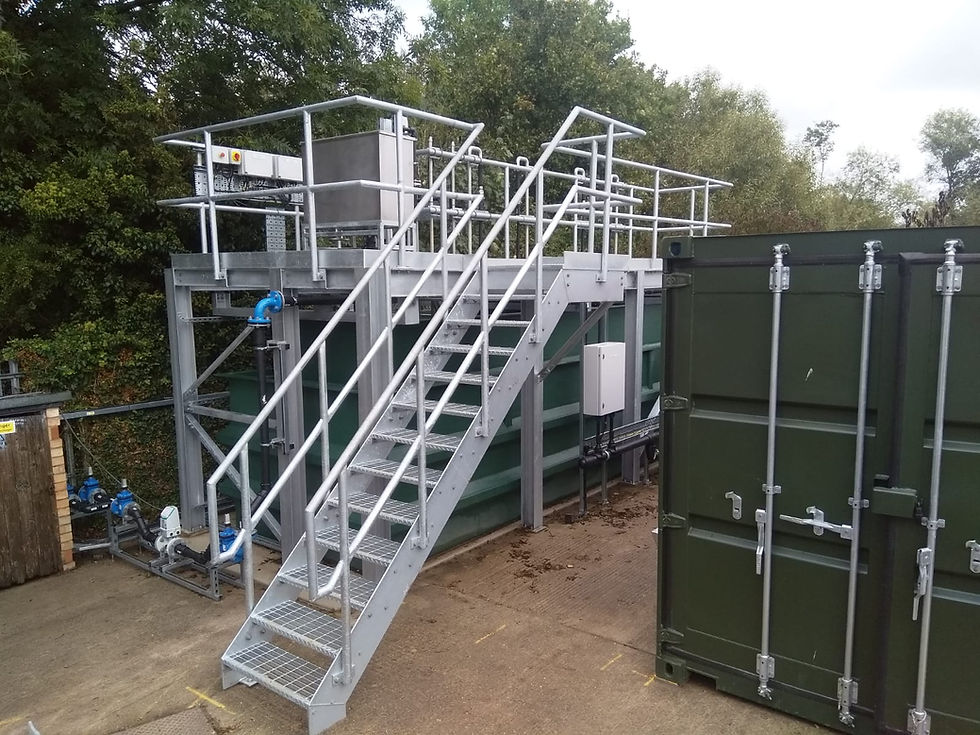De-Watering Pump Innovation When Scaling is Causing Havoc
- Ryan March

- Jul 6, 2022
- 3 min read
Learn how site operators have found a new defence in keeping the liquids moving without manual maintenance or chemicals

SUMP PUMP WAS PULLED BI-WEEKLY FOR CLEANING PRIOR TO FLOWSCIENCE
Flow is vital in so many processes and operations that move liquids. Take landfills for instance. If leachate that is produced within the waste mass cannot move uninhibited to its destination for vital treatment, harmful gases find the path of least resistance and can escape. They do. This is not the path they need to take nor the intention of the landfill design. Gas wells and sumps are continually de-watered with one caveat; the pumps working in order to be moving liquid into the leachate collection pipe network.
The problem with this gnarly, toxic soup is that it's filled with so much chemistry and unpredictability. To boot, it all happens beneath the surface. Pumps often experience varied levels of clogging from alien like substances or formations based on several main factors from the waste stream to the weather conditions. These formations require manual upkeep and a variety of methods to maintain de-watering and flow depending on what is causing the clogging. I was particularly curious visiting so many landfills several years back of what the buildings with all the pumps and parts around it was. I learned that this was often called a "pump house". Whereas in some cases personnel work full time pulling, cleaning, repairing and replacing pumps. It was discovered that in most cases that there were two main culprits that caused all of this havoc; leachate scale and the "black goo" or flubber. It seemed crazy to a guy like me that's helped move liquids for more than 20 years that this was a thing. But it was. So we tried some things. Experimenting is always a good time.
Typical O&M practices for pump upkeep consists of manual cleaning, acids or chemicals. Not to mention tear downs, parts replacement and rebuilds. On large sites it's a job that never ends. Now I know a thing or two about best practices for keeping flow going and keeping scaling off of vital process piping and equipment, so we came up with an idea that we thought perhaps could help.
We've specialized in pipe protection and often protection of equipment that lies ahead when it comes to scaling inhibiting an important operational process. Well over a thousand units in the field later and a few hundred million in customer savings; we may know a thing or two about a thing or two as previously stated. So we decided to try something. Then we did it again and yet again. What we did was significant and we know it. FlowScience Leachate Scale Control Systems were attached to numerous pumps to learn what worked best and to experiment, with the goal of protecting pumps from clogging, costly repairs and letting leachate flow as it must. This was the dawn of the FlowScience Pump Protector.

The FlowScience Pump Protector is attached to the exterior of pumps of almost any kind. Though we've learned a lot about the nuances of what works better than others.
The system itself generates a pulsed EM field that repels scale from forming on pumps and over the perforations or intake. Yup, we've done it dozens and dozens of times too and on all kinds of different pumps. The systems extend run time vastly and in worst case scenarios with extreme conditions only allow for a "mushy" build up that can be hosed off easily. This changes the de-watering and pump maintenance game. It's not currently all that fun according to the pump maintenance peoples. The bottom line; pumps will de-water longer and maintenance becomes simple and in a fraction of the time previous. Saving an abundance of costs along the way.
The FlowScience Pump Protector Systems can be installed in minutes as seen above. The control hub simply plugs into its power source (120V or Solar) and begins working in minutes. Coils and coatings have lasted for years submerged in some of the harshest leachate there is and can be swapped out when time has taken its toll. The product has been built to work on pneumatic, electric and sump pumps and our team can offer best practice advice on what works best.
Henry Ford once said: "many people are busy trying to find better ways of doing things that should not have to be done at all. There is no progress of merely finding a better way of doing a useless thing"
Seemed fitting to me. Now what do you have to lose trying something different and what do you have to gain? FlowScience just works. www.getflowscience.com




Comments